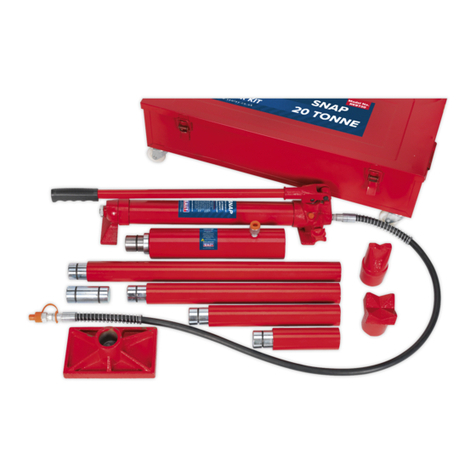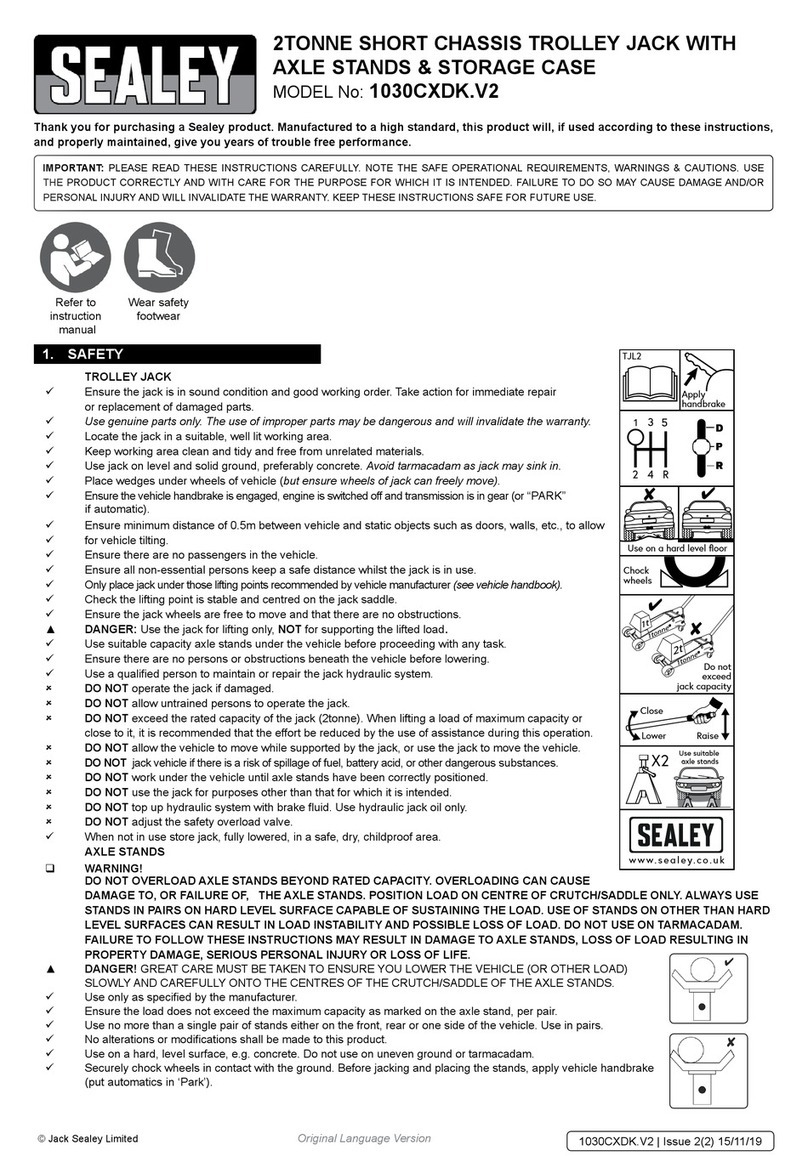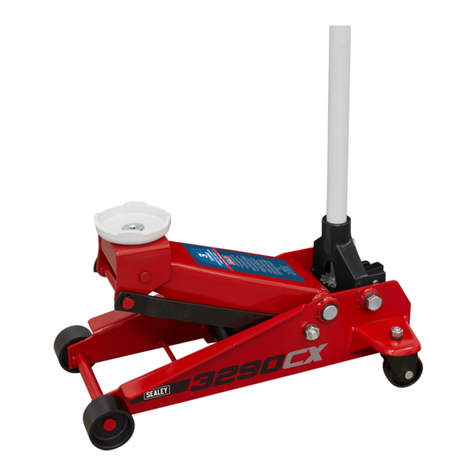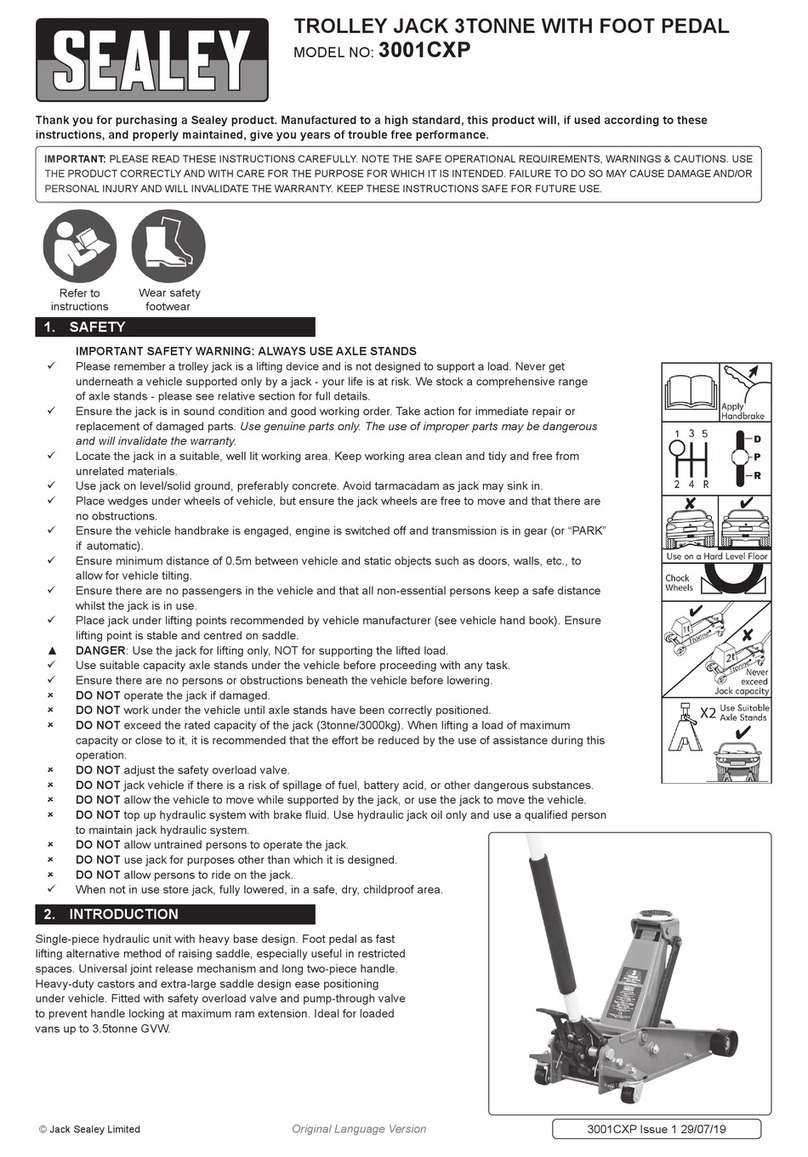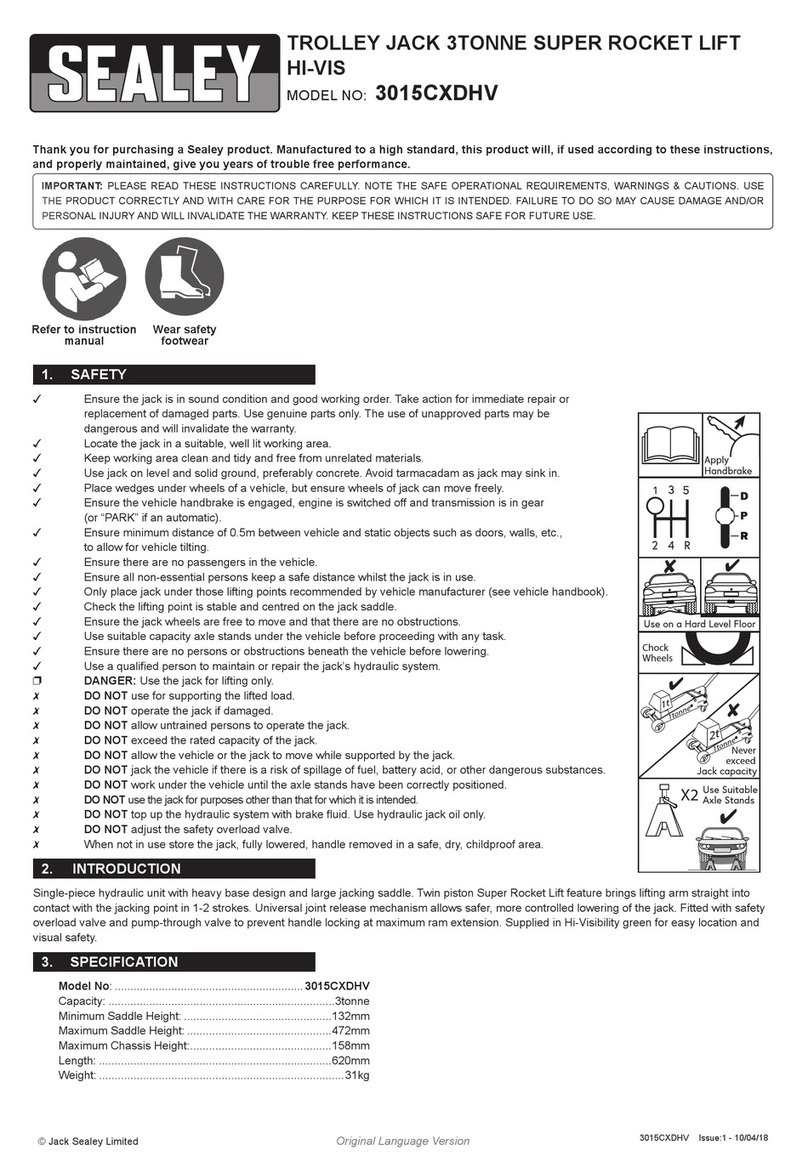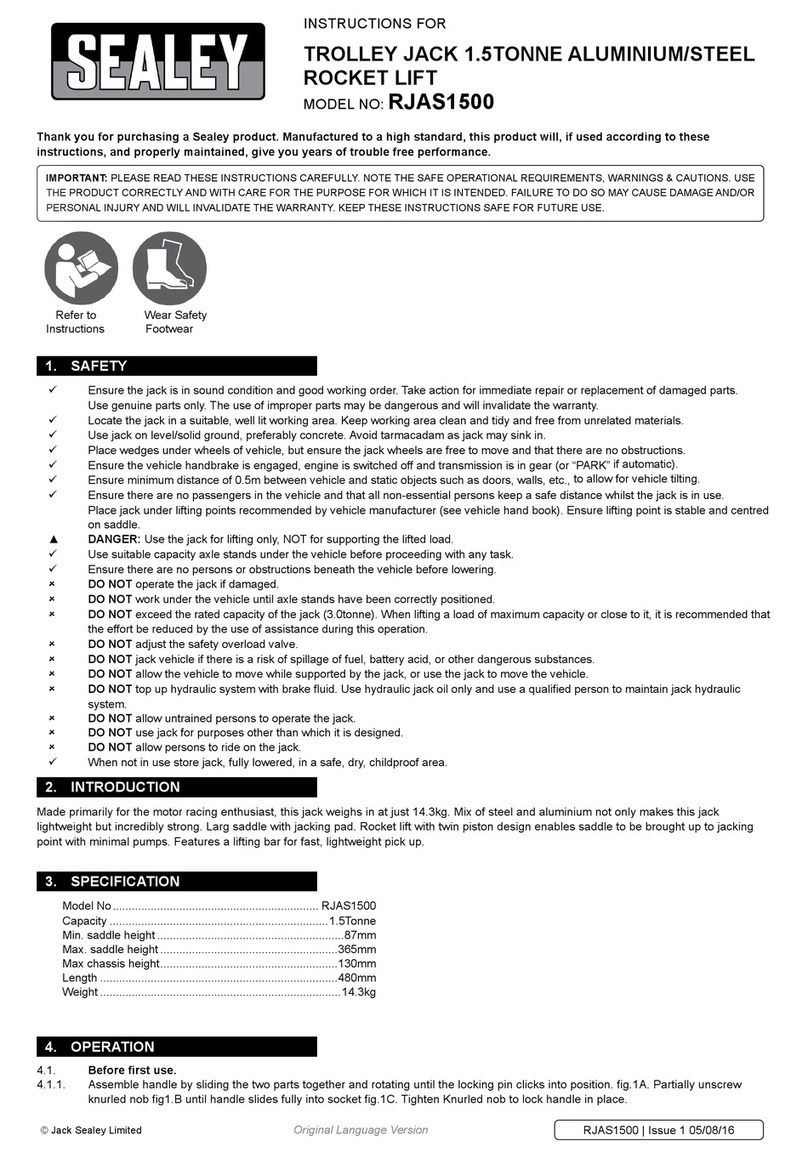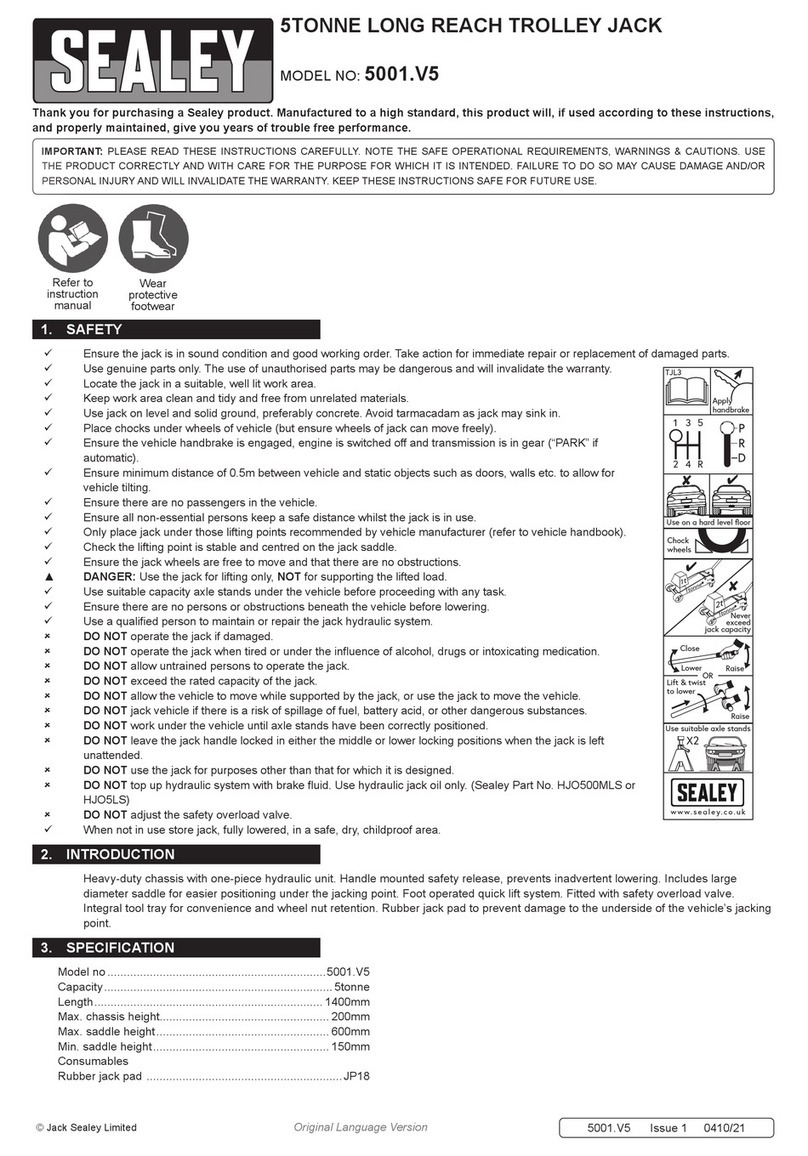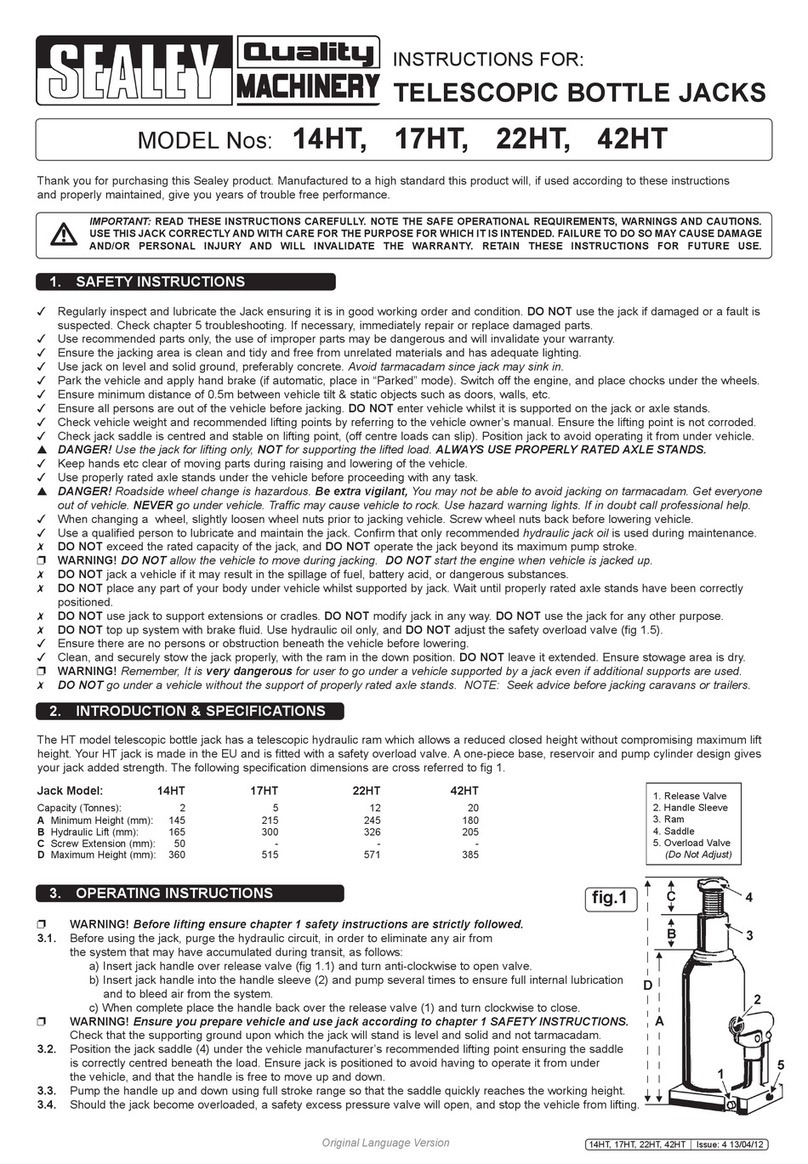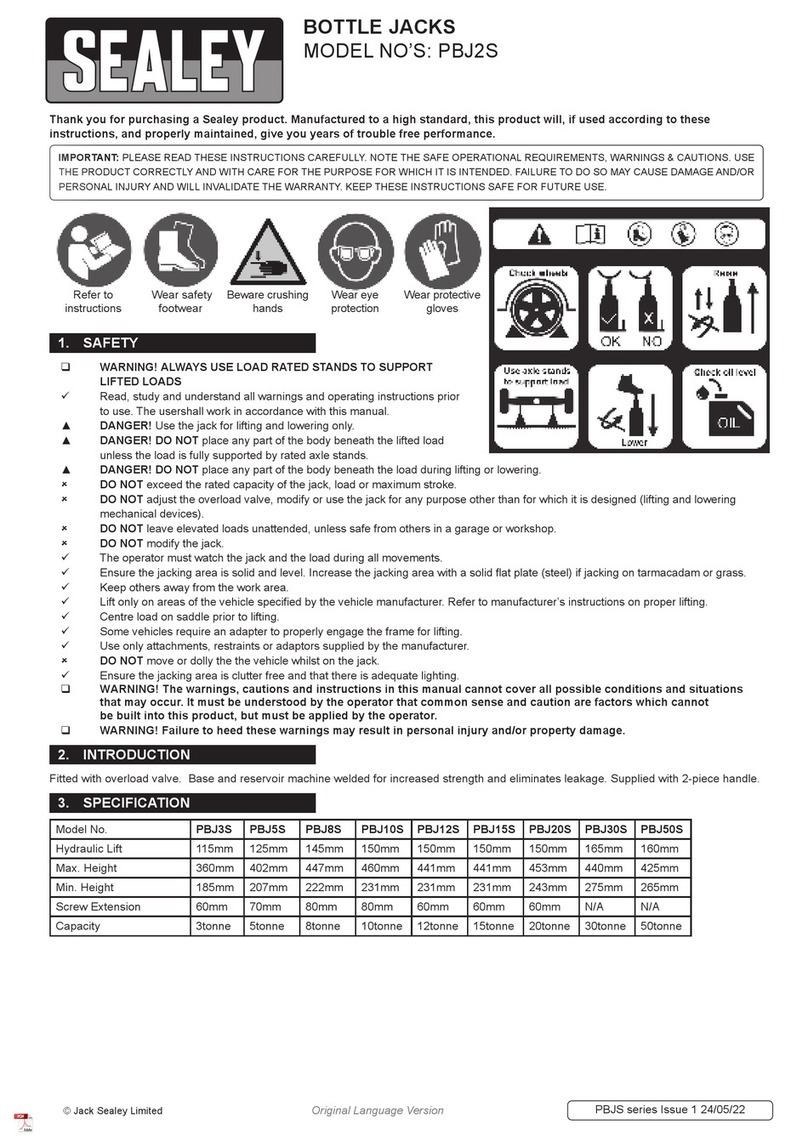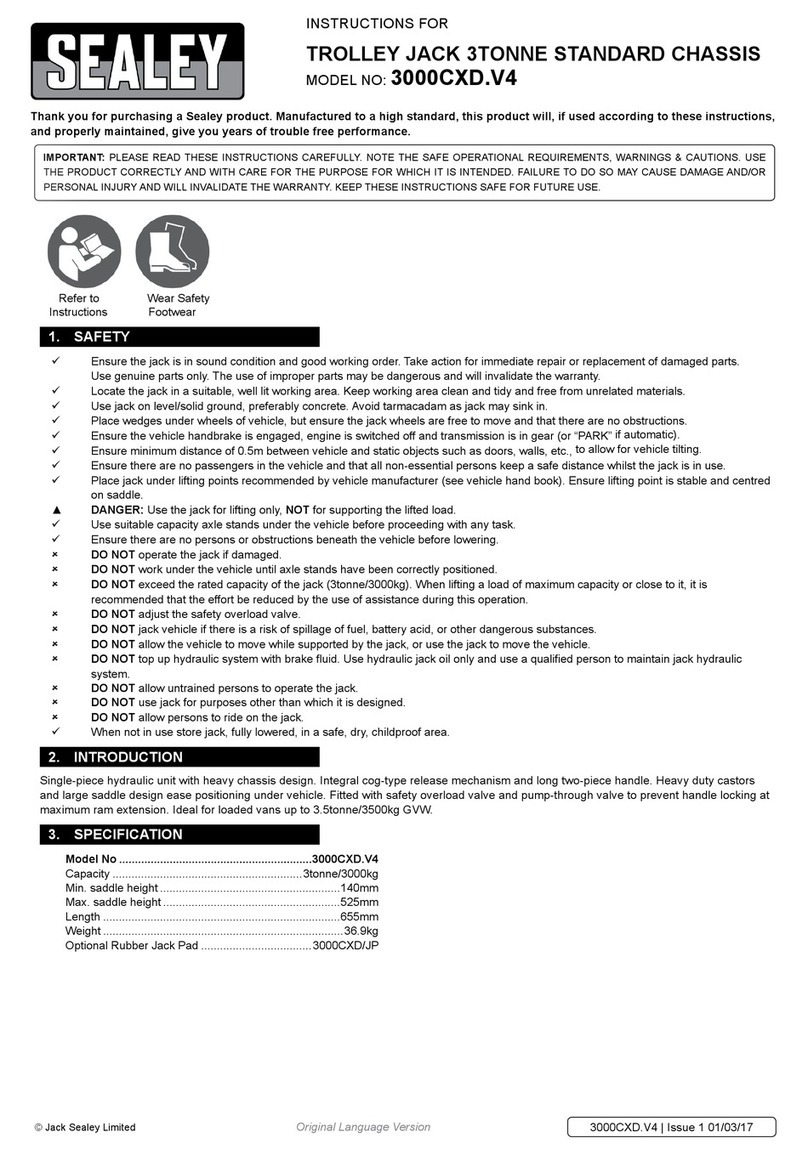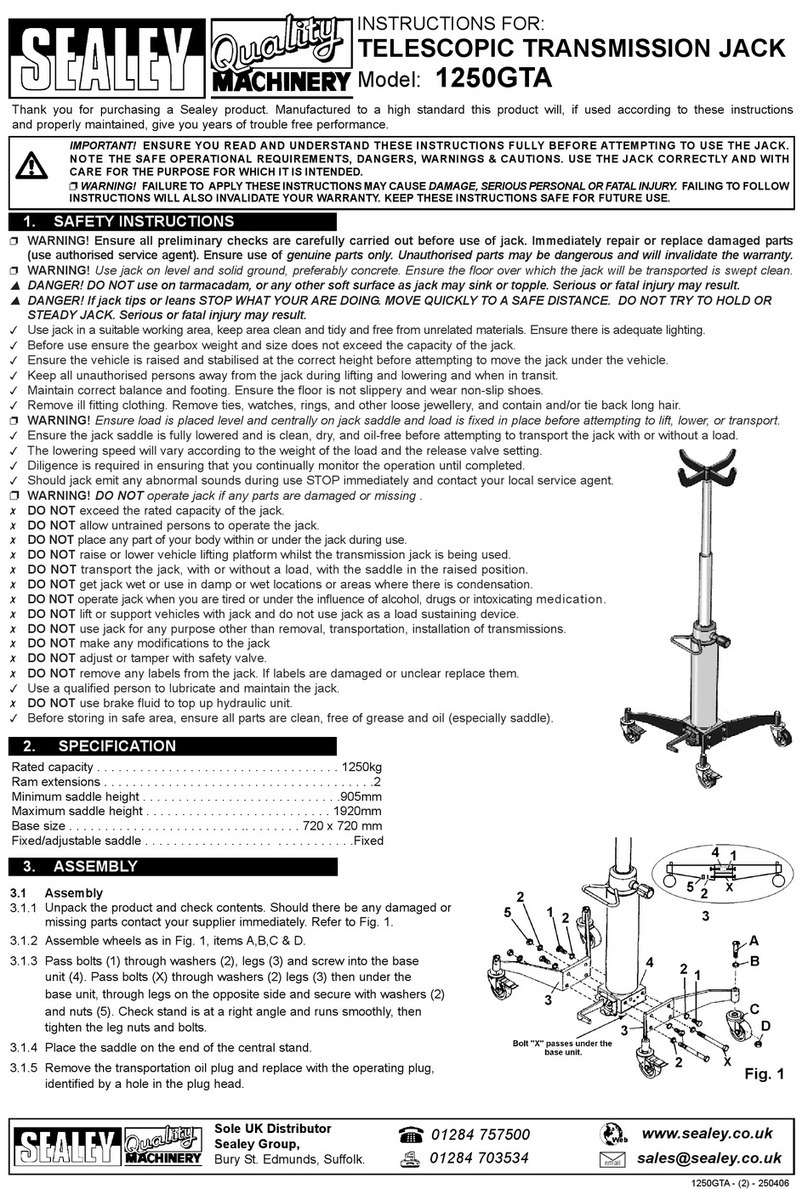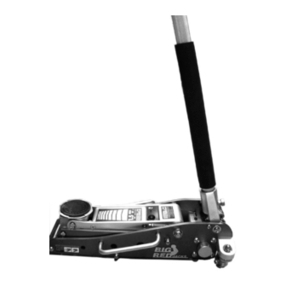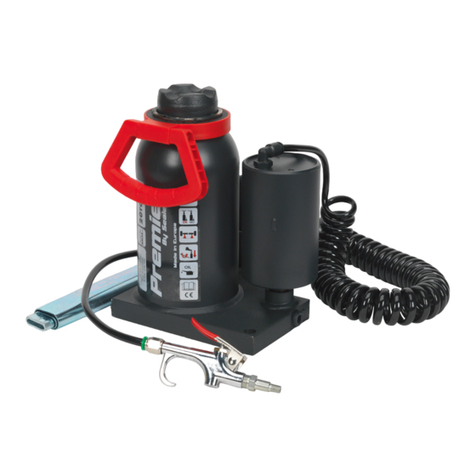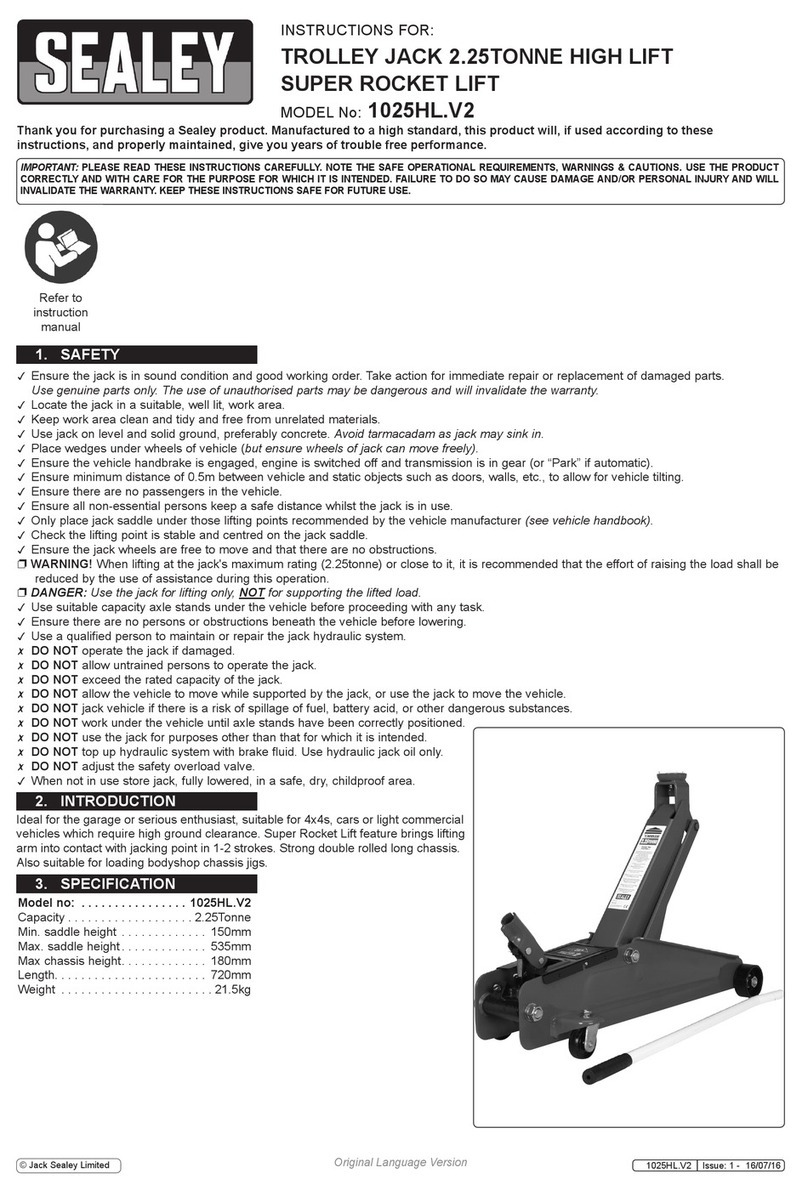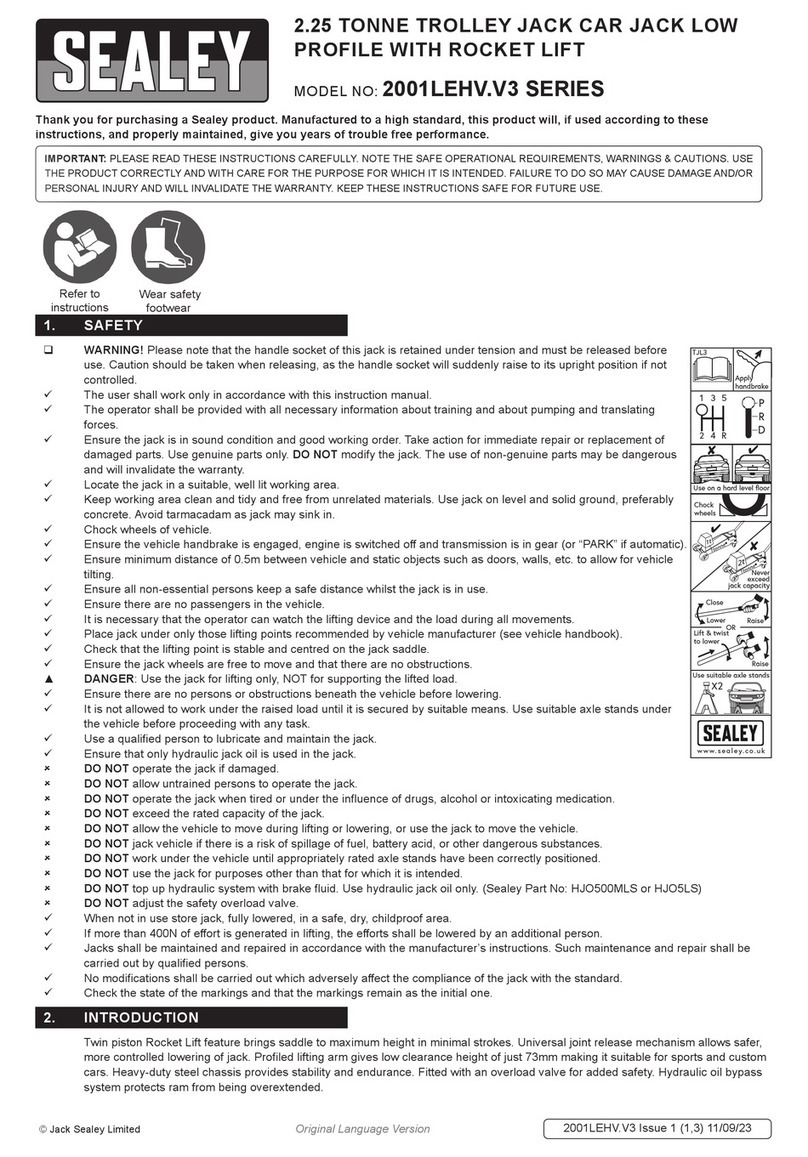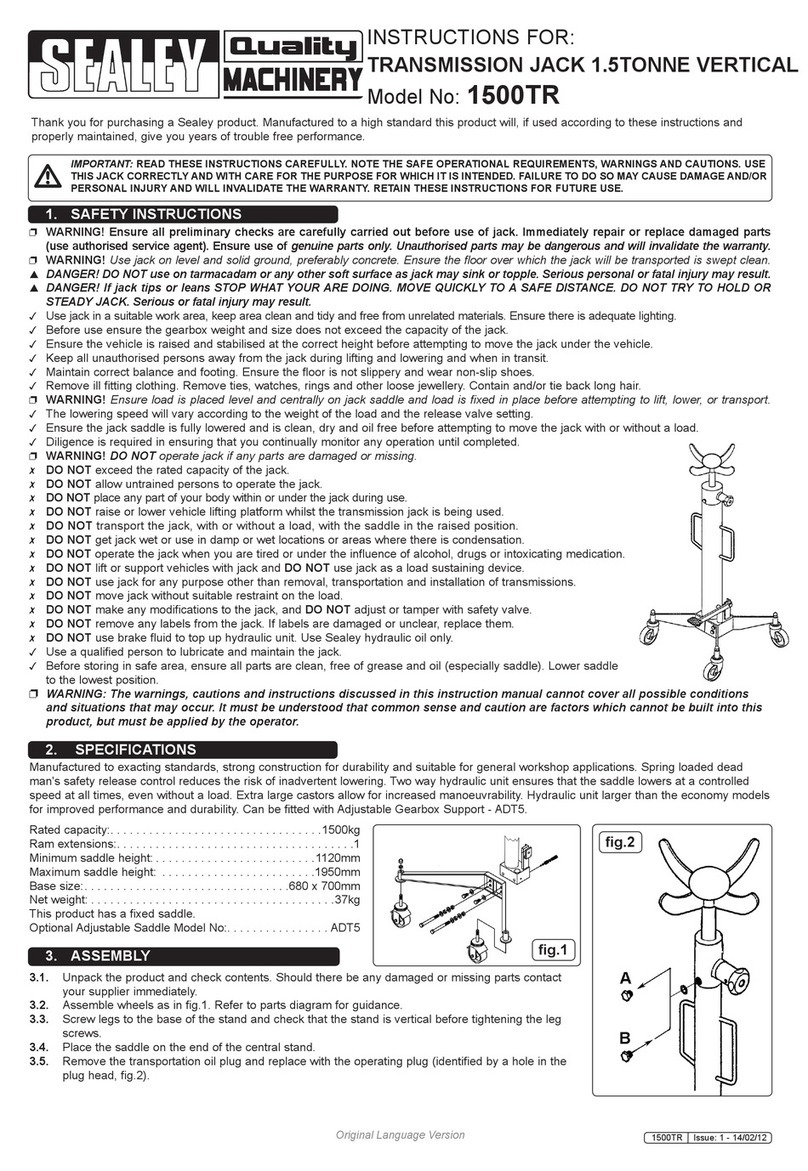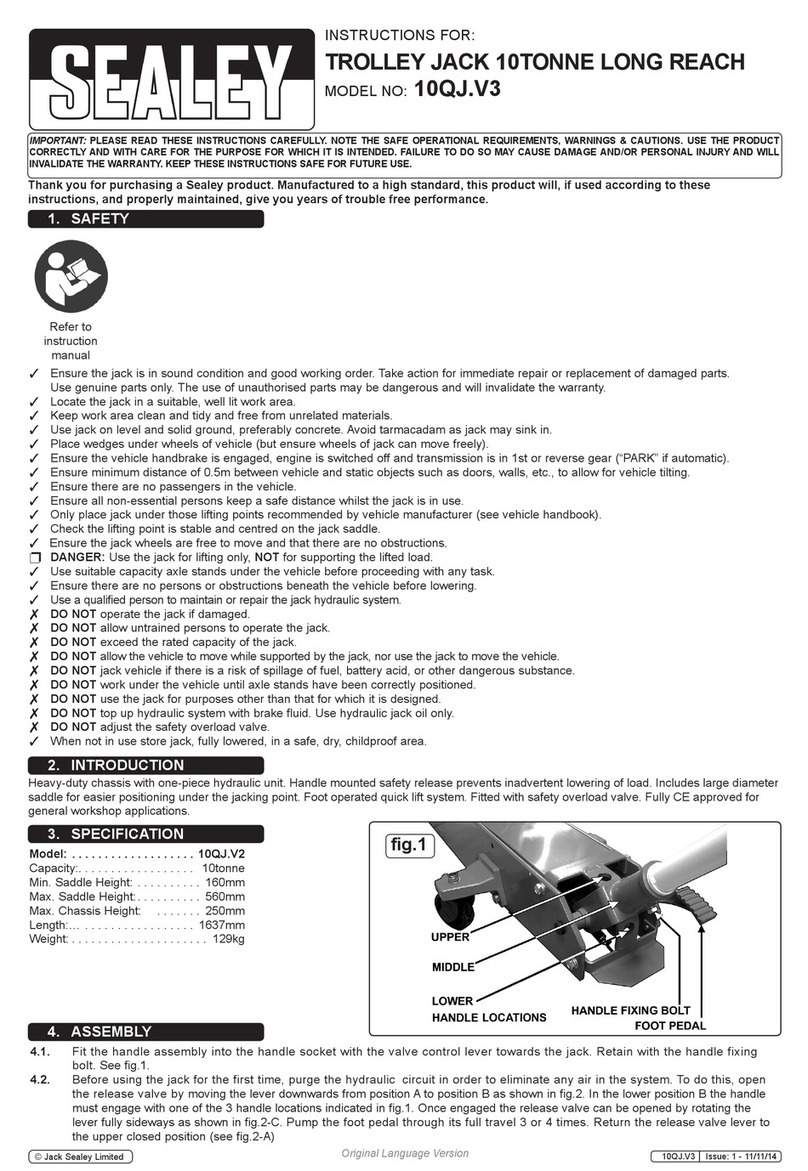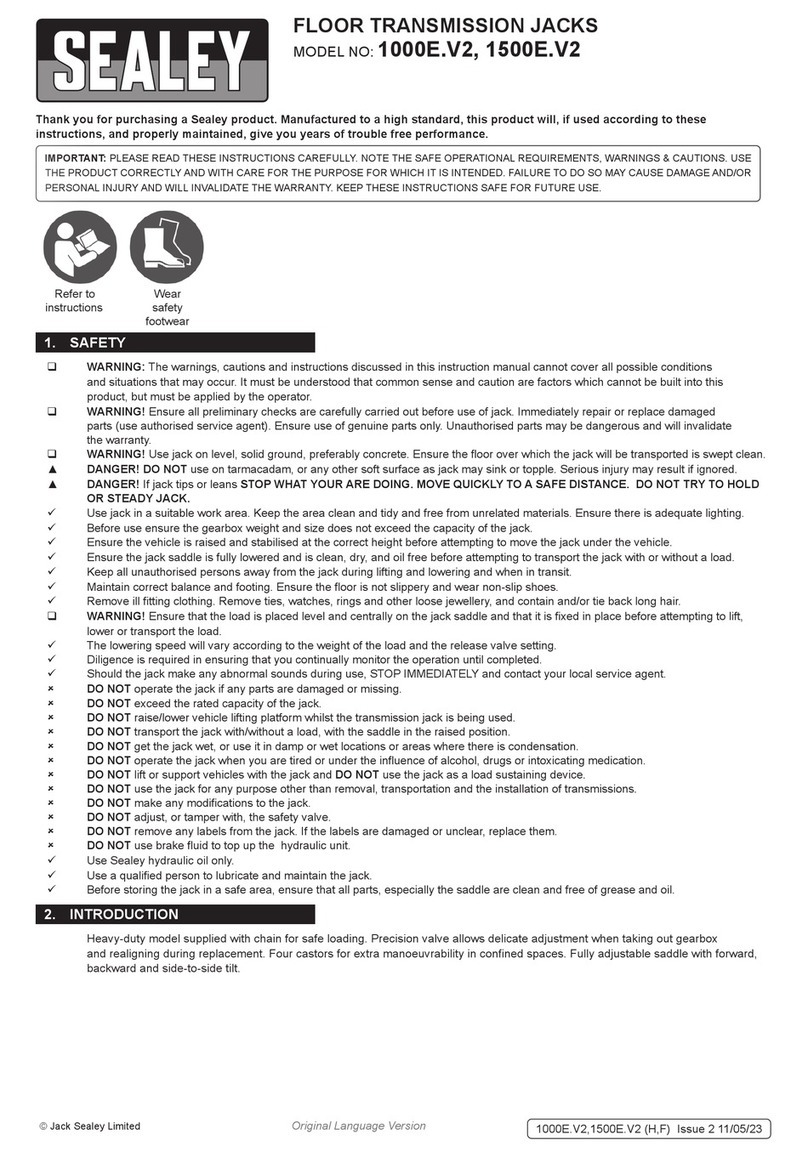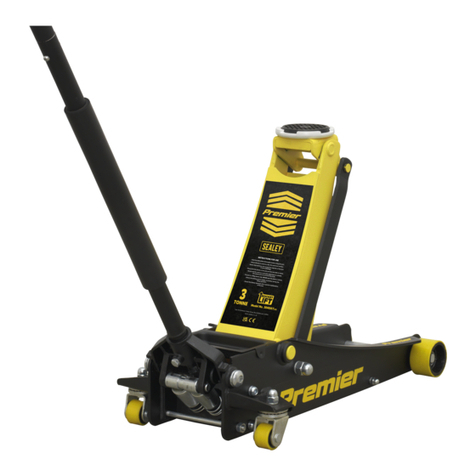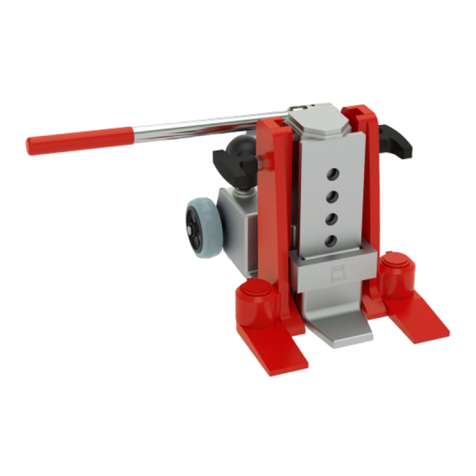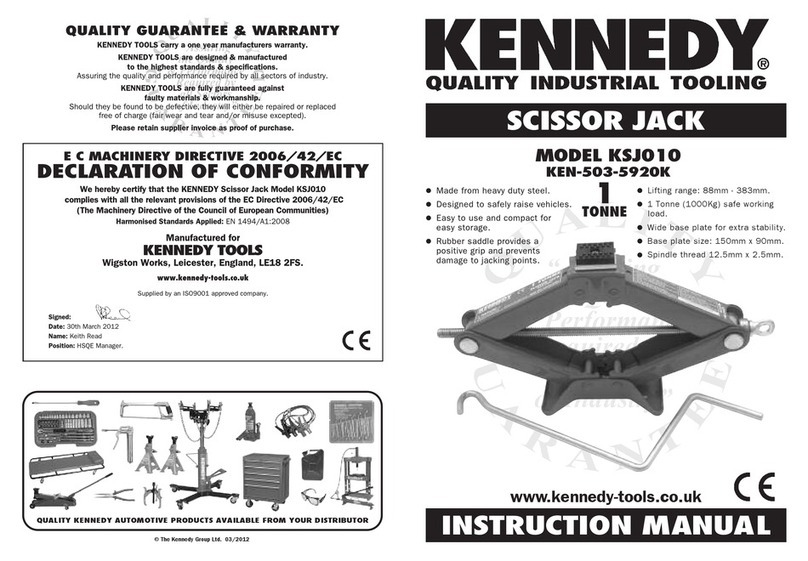
7.3. Before each use check for broken, cracked, bent, or loose parts, or any visible damage to ram, pump, saddle, lifting arm, frame and
all parts including nuts, bolts, pins and other fasteners. If any suspect item is found remove jack from service and take necessary
action to remedy the problem.
DO NOT use the jack if believed to have been subjected to abnormal load or shock load.
7.4. Periodically check the pump piston and the ram for signs of corrosion. Clean exposed areas with a clean oiled cloth.
7.5. After one year the oil should be replaced in order to extend the life of the jack. Use hydraulic jack oil only.
WARNING! Maintenance and repair must only be carried out by a qualified person. Contact your Sealey stockist for details.
7.6. TO CHECK THE OIL LEVEL
7.6.1. Fully lower the jack and remove filler plug (fig 2 - 1) The correct level is the bottom of the screw hole. If oil level is low, fill as required.
Pump jack 5 or 6 times to expel air. Pump jack up to full height and pour offexcess oil before refitting plug.
DO NOT touch the safety overload valve (fig 1 - 3).
NOTE: Use a good quality jack oil, such as SEALEY HYDRAULIC JACK OIL.
WARNING: DO NOT use brake fluid, or any fluid other than hydraulic jack oil as this may cause serious damage to the jack and will
invalidate the warranty.
7.7. To drain the oil, remove the filler plug and raise front of jack. Make sure that no dirt is allowed to enter the hydraulic system.
IMPORTANT: NO RESPONSIBILITY IS ACCEPTED FOR INCORRECT USE OF THIS PRODUCT.
Hydraulic products are only repaired by local service agents. We have service/repair agents in all parts of the UK.
DO NOT RETURN PRODUCT TO US. Please telephone us on 01284 757500 to obtain the address and phone number of your
local agent.
If the jack is under guarantee please contact your stockist.
De-commissioning Product
Should the jack become completely unserviceable and require disposal, draw off the oil into an approved container and dispose of the
jack and the oil according to local regulations.
8. MAINTENANCE - AXLE STANDS
8.1. Before each use check to ensure stands and stand welds are not cracked, and that there are no missing and/or damaged parts.
WARNING! Any stand that appears to be damaged in any way must be removed from service immediately.
8.1.1. Ensure the locking pins are in good order and condition.
8.1.2. Due to the potential hazards associated with these stands, do not misuse, or make any modification to the stands or components.
8.1.3. It is the responsibility of the stands owner to ensure the operator has read these instructions, and that the operator is familiar with the
stands use and limitations.
Original Language Version 3010CX.V3 Issue:1 - 01/03/21
© Jack Sealey Limited
9. TROUBLESHOOTING - JACK
PROBLEM POSSIBLE CAUSE REMEDY
Jack will not lift the load 1) Overloaded
2) Oil level low
3) Release valve not correctly
closed
4) Air in system
5) Piston rod not functioning
6) Packing worn or defective
1) Be sure to use jack with adequate capacity
2) Top up oil level
3) Check and close release valve
4) Open release valve and pump the handle a few times.
Close valve and re-try
5) Clean and replace oil
6) Replace packing
Jack does not lift high
enough
Or feels “spongy”
1) Oil level too high or too low
2) Worn seals
3) Air in system
4) Release valve not closed
1) Fill or remove excess oil
2) Return jack to local service agent
3) Open release valve and pump the handle a few times. Close valve and re-try
4) Check and close release valve
Jack lifts poorly 1) Pump packing or valves
malfunctioning
2) Oil is dirty
3) Air in the system
1) Replace packing and/or clean valves
2) Replace oil
3) Open release valve and pump the handle a few times.
Close valve and re-try
Jack lifts but will not hold
load
1) Release valve partially
open
2) Dirt on valve seats
3) Air in system
4) Faulty seals
5) Packing worn or defective
1) Check and close release valve
2) Lower jack, close release valve. Place foot on front wheel and pull up lifting
arm to it’s full height by hand.
Open the release valve to lower arm
3) Open release valve and pump the handle a few times. Close valve and re-try
4) Replace packing or contact local service agent
5) Replace packing
Jack will not lower
completely
1) Unit requires lubrication
2) Piston rod bent or
damaged
3) Jack frame/link system
distorted due to overloading/
poor positioning
4) Air in system
5) Release valve partially
closed
6) Jack spring damaged or
unhooked.
1) Oil all external moving parts
2) Replace rod or contact local service agent
3) Replace damaged parts or contact local service agent
4) Open release valve and pump the handle a few times.
Close valve and re-try
5) Check and fully open release valve
6) Replace spring or contact local service agent
Jack does not lower at all 1) Release valve closed 1) Check and fully open release valve
